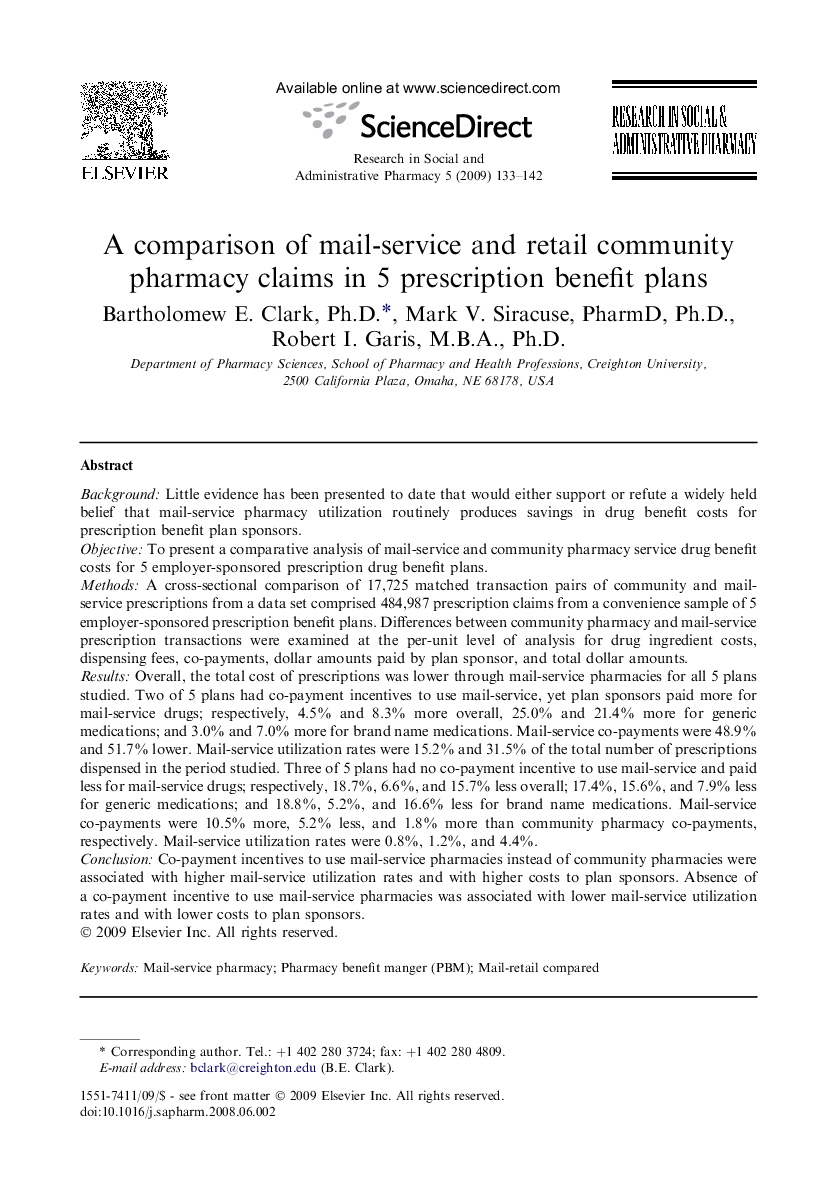| Article ID | Journal | Published Year | Pages | File Type |
|---|---|---|---|---|
| 2508733 | Research in Social and Administrative Pharmacy | 2009 | 10 Pages |
BackgroundLittle evidence has been presented to date that would either support or refute a widely held belief that mail-service pharmacy utilization routinely produces savings in drug benefit costs for prescription benefit plan sponsors.ObjectiveTo present a comparative analysis of mail-service and community pharmacy service drug benefit costs for 5 employer-sponsored prescription drug benefit plans.MethodsA cross-sectional comparison of 17,725 matched transaction pairs of community and mail-service prescriptions from a data set comprised 484,987 prescription claims from a convenience sample of 5 employer-sponsored prescription benefit plans. Differences between community pharmacy and mail-service prescription transactions were examined at the per-unit level of analysis for drug ingredient costs, dispensing fees, co-payments, dollar amounts paid by plan sponsor, and total dollar amounts.ResultsOverall, the total cost of prescriptions was lower through mail-service pharmacies for all 5 plans studied. Two of 5 plans had co-payment incentives to use mail-service, yet plan sponsors paid more for mail-service drugs; respectively, 4.5% and 8.3% more overall, 25.0% and 21.4% more for generic medications; and 3.0% and 7.0% more for brand name medications. Mail-service co-payments were 48.9% and 51.7% lower. Mail-service utilization rates were 15.2% and 31.5% of the total number of prescriptions dispensed in the period studied. Three of 5 plans had no co-payment incentive to use mail-service and paid less for mail-service drugs; respectively, 18.7%, 6.6%, and 15.7% less overall; 17.4%, 15.6%, and 7.9% less for generic medications; and 18.8%, 5.2%, and 16.6% less for brand name medications. Mail-service co-payments were 10.5% more, 5.2% less, and 1.8% more than community pharmacy co-payments, respectively. Mail-service utilization rates were 0.8%, 1.2%, and 4.4%.ConclusionCo-payment incentives to use mail-service pharmacies instead of community pharmacies were associated with higher mail-service utilization rates and with higher costs to plan sponsors. Absence of a co-payment incentive to use mail-service pharmacies was associated with lower mail-service utilization rates and with lower costs to plan sponsors.
